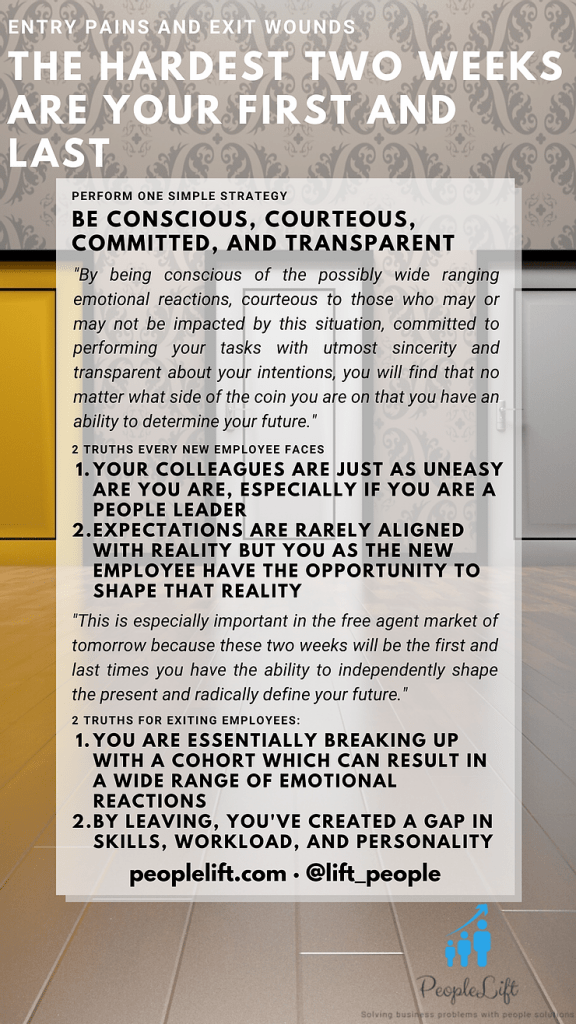This is a throw back to a time where there were more open jobs than available workers. Feels strange doesn’t it?
Often times though, recovery will take a different shape than we thought. From the S shaped to the U shaped to the V shaped, economists will try to help us visualize what the future will bring.
For many in my network, the future will bring a ‘first two weeks’. I hope these thoughts bring value to you as many begin to reenter the work force
—–
A mentor of mine recently said after my recent employment transition that the hardest two weeks are your first and your last. This thought conjured memories of recent wrist cramps filling out HR paperwork, awkward introductions resembling a “today’s special” at the local watering hole and a veiled hope that you(the new employee) will match their(employer) expectations.
In your first week, leaders(good ones at least) exude hope that their new hire’s impact will be positive and generally carry a “first date face” while introducing the new employee to their ecosystem. Just like when dating, new employees are generally overwhelmed with newness of the situation and are trying not to make a mistake vs trying to create a lasting impression.
Conversely, the last week is traditionally just as unproductive due to transitional conversations, role training and back office adjustments. This focus on a clean exit vs continued value is due to newly uncovered “breakup face”.
When presented with either situation, it is fair to ask “what can we really accomplish?” A pessimist will say “practically nothing”, a pragmatist “well say that depends” but the opportunist will say “as much as I can and possibly more than I imagined”. This rose tinted glasses approach is incredibly effective because there are two truths that every new employee faces:
1. Your colleagues are just as uneasy as you are, especially if you are a people leader.
2. Expectations are rarely aligned with reality but you as the new employee have the opportunity to shape that reality.
For exiting employees, the same pessimist and pragmatist exist in all of us but the opportunist will recognize the vulnerability of the situation and take advantage of this time period to create lasting bonds.
There are two truths for exiting employees as well:
1. You are essentially breaking up with a cohort which can result in a wide range of emotional reactions.
2. By leaving you’ve created a gap in skills, workload and personality.
As human beings we all desire the ability to control a situation to our benefit and these two weeks, the hardest two weeks, provide this opportunity. So instead of focusing on the goals you can accomplish or the work you can clear off your desk, focus on building or sustaining relationships as they will be more impactful than any one victory you achieve.
The opportunist will recognize this change to remain an influencer in both situations by performing one simple strategy:
Being conscious, courteous, committed and transparent
By being conscious of the possibly wide ranging emotional reactions, courteous to those who may or may not be impacted by this situation, committed to performing your tasks with utmost sincerity and transparent about your intentions, you will find that no matter what side of the coin you are on that you have an ability to determine your future. This is especially important in the free agent market of tomorrow because these two weeks will be the first and last times you have the ability to independently shape the present and radically define your future.






